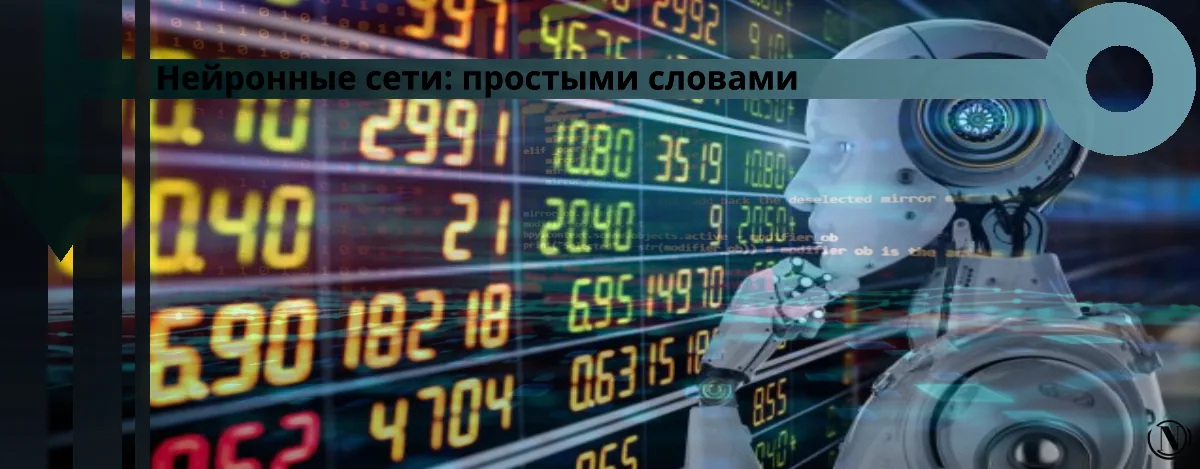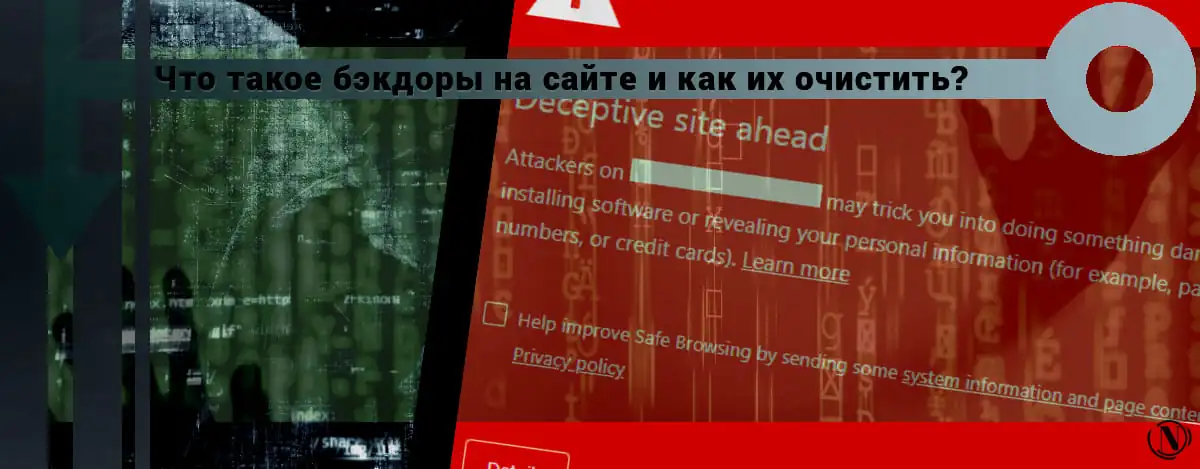Educational content: features of creation and application

Educational content is not only a set of information, it is a specially prepared material that helps people gain knowledge and skills in a particular area. Educational content is presented in formats ranging from texts to YouTube videos.
The importance of educational content for online resources cannot be overestimated - it not only helps to increase the site's expertise and attract new users, but also improves interaction with an existing audience. In this article, we will look at aspects of educational content, its creation and application.
The content of the article:
- Benefits of educational content
- Where educational content is used
- How to create educational content
- Target audience research
- Determining the topic and content format
- Content plan development
- Content writing
- Creation of graphic and video material
- Recommendations for authors
- Examples of Successful Educational Content
- How to measure the success of educational content
- Conclusion
- FAQ
Benefits of educational content

Educational content has the following benefits that can help an online resource. Here are some of them:
- Increasing expertise. The creation of educational content allows the company to act as an expert in the industry. Posting meaningful content that educates and develops users will help establish a company as an authoritative source of information and build customer confidence.
- Satisfying the needs of users. Educational content can help meet user needs. Providing the user with meaningful and informative information can help solve a problem or question and provide value.
- SEO improvement. Creating educational content can help improve a website's SEO performance. Posting meaningful and informative content leads to steep search engine rankings, increasing the site's visibility and attracting more traffic.
- Attracting new audiences. Educational content can help a company reach new audiences. Posting meaningful and useful content can attract people who are looking for information in a particular industry and interest them in the company.
- Constant learning. Creating educational content can help employees continually learn and develop. Developing meaningful and informative content can help employees learn new things and develop skills, which is beneficial for their professional growth and development.
Where educational content is used

Educational content is a serious tool in digital marketing. Educational content is used on websites, social networks, YouTube videos, email newsletters and chatbots.
- On websites, educational content can attract visitors, keep them on the site, and increase their engagement. These can be articles, guides, instructions, video tutorials, etc. It is important that the content is useful and relevant to the theme of the site.
- On social media, educational content can help grab the attention of your target audience and increase your following. The following formats are used here: short videos, pictures with quotes, polls, as well as links to articles and videos.
- In YouTube videos, educational content can help attract new subscribers and increase views. It is important that the video is informative, understandable and useful for the target audience.
- In email marketing, educational content can help increase email open rates and link click through rates. The following content formats are used here: guides, cases, checklists, courses, etc.
- In chatbots, educational content can help grab the attention of users and keep them on the site. The following formats are used here: answers to questions, recommendations, links to articles and videos.
It is important that the content is interesting and useful for users.
How to create educational content

Creation of educational content is a complex process that requires attention to detail and knowledge in the field of education. However, if you approach this process wisely, you will improve your visibility in search engines and attract new customers. To create educational content, define the audience, select suitable topics, develop content, use formats such as (text, video, audio), keep content updated and optimized for search engines. In this section, we will take a closer look at each of these points and give practical recommendations for creating quality educational content.
Target audience research
Target audience research is the first step in creating educational content. It determines what topics will be of interest to the audience and what content formats will be convenient for their consumption. For audience research, the following methods are used, such as surveys, search query analysis, social media research, and others. It is important to understand that the target audience may have different levels of knowledge and interests, so create content that will be accessible to everyone, but at the same time will be interesting and useful for everyone.
Once you have identified your target audience, the next step is to determine the topic and content format that will suit their needs and interests. To do this, use content formats such as videos, articles, blogs, webinars, infographics, and others.
Determining the topic and content format
In order to create educational content, decide on its topic and format. The content topic should be interesting and useful for the target audience, and the format should be convenient and accessible for its perception. For example, for those who prefer visual materials, use video tutorials or presentations. For those who prefer reading, textual content is better suited - articles, blogs, books or digests.
Also consider the content format depending on the topic. For example, for the topic “How to start your own business”, a series of video tutorials may be suitable, and for the topic “Secrets of effective language learning”, articles with practical tips. It is important to remember that the quality of content must be at a high level, otherwise the target audience will go to competitors. Determining the topic and content format is a serious step in creating educational content that will attract and hold the attention of the audience.
Content plan development
To create educational content, develop a content plan. Includes the topics and subtopics covered by the content, as well as the specific tasks you want the content to solve. It is important to take into account the interests and needs of the target audience when drawing up a plan so that the content is useful and interesting for them.
Also, consider the diversity of content formats when developing your content plan. Depending on the topic, some formats may be more appropriate than others. For example, for topics related to practical skills, it will be useful to create video tutorials or instructional materials in PDF format. At the same time, for topics related to theoretical knowledge, formats of articles, presentations or webinars are suitable. A variety of formats will cover different types of learning and provide convenience for the audience.
Content writing
Here is the sequence for writing content:
- Determine the topic and format of the content, taking into account the interests of the audience.
- Do your research and identify keywords that are frequently used in user queries.
- Write a title that conveys the content of the article and contains keywords.
- Break the article into paragraphs and define the idea of each of them.
- Write an introduction that grabs the reader's attention and contains key keywords.
- In the body of the article, develop each of the main points using detailed explanations, examples, and references to authoritative sources.
- Write a conclusion summarizing and highlighting the main conclusions.
- Check the article for errors and typos, as well as for uniqueness using special tools.
- Optimize your article for search engines by using keywords in the title, introduction, and body of the article, as well as image and metadata attributes.
- Post the article on your website or social media using relevant hashtags and descriptions.
Creation of graphic and video material
When creating educational content, graphics and video play a role in capturing and retaining the attention of the audience. Cool and professionally designed illustrations, diagrams, graphs, and videos can help you better explain difficult concepts and understand the material, which ultimately leads to effective learning.
When creating graphics and video material for educational content, it is important to consider the audience and format of the content. For example, younger audiences may be more interested in dynamic and modern videos, while older audiences prefer static and formal graphics. In any case, quality and professionalism are key factors to consider when creating graphics and video material.
Recommendations for authors
To create high-quality educational content, pay attention not only to the content, but also to the form of information presentation. Write simply and clearly, avoiding complex terms and specific expressions. Keep in mind that the target audience may not have a sufficient level of knowledge on this topic, so try to explain step by step and in an accessible way.
To keep the reader's attention, try to make the text useful and meaningful. Add examples, illustrations, statistics, and other elements to help illustrate your point. This will help improve the perception of information and make the content memorable.
Use links to additional sources to give readers the opportunity to delve into the topic and find additional information. Keep in mind that the goal is to give the whole picture, so don't be afraid to link to articles, research, and other sources that can help the reader gain a deeper understanding of the topic.
Check spelling and grammar to make content look professional and high quality. Even small errors can negatively affect the perception of the content, so try to check the text several times and use checking tools to make sure that the text does not contain errors.
Examples of Successful Educational Content
Cool educational content examples can help you create your own content that grabs the attention of your audience. One way to find cool examples is to look at case studies from other authors. Study those examples that were successful and got great results in attracting an audience and keeping their attention. Use these examples as a starting point for creating your own content, but don't literally copy them - create something unique.
Describing best practices is also useful for creating quality educational content. Learn what types of content are effective in attracting and retaining an audience, what content format works best for a topic, and how you can use the content to achieve your goals. Learn from best practices and incorporate them into your own content.
Video tutorials are another effective way to create educational content. Such lessons allow you to show the audience how something is done, and this can be more effective than just writing text. Video lessons are also attractive to an audience that is easier to absorb information visually. However, make sure the video tutorials look professional and have good sound and video quality.
Expert advice can also help create quality educational content. Learn what experts in your topic have to say and incorporate their tips and tricks into your content. This will help create professional and high-quality content that will attract the attention of the audience and help them achieve their goals.
How to measure the success of educational content
When it comes to educational content, many people wonder how to measure its success. First of all, pay attention to the number of views and unique users who visited the content page. These metrics will help you understand how widespread the content is.
Another indicator is the number of comments and feedback. If the content causes interest and questions from the audience, then this may indicate its quality and usefulness.
You should also pay attention to the number of subscribers and likes in social networks. If people are actively responding to content and sharing it with friends, it can speak to its value.
In addition, educational content can help improve SEO performance. If you use keywords and unique content, then this will improve the site's ranking in search engines.
Finally, educational content can lead to increased sales. The more people who know about a product or service, the more likely they are to become your customers. Therefore, the success of educational content can also be measured by the number of attracted customers and the increase in sales.
Conclusion
In conclusion, we note that the creation of high-quality educational content is a long and laborious process. Which requires careful study of each element of content: from the topic to the way it is promoted. However, if done right, educational content can be an effective tool to attract new customers and increase sales.
It should also be noted that the success of educational content is measured not only by the number of views and likes. But also in terms of the quality of feedback from the audience. As well as improving SEO performance and increasing sales. Therefore, in order to achieve cool results, it is worth paying attention not only to the creation of high-quality content, but also to its promotion and analysis of success indicators.
FAQ
Q: What is educational content?
A: Educational content is informational material that is created to help people learn new topics or expand their knowledge in a particular area. Educational content includes texts, videos, audio, graphics, webinars and other formats.
Q: What are the benefits of educational content?
A: The benefits of educational content are clear. It helps people acquire new knowledge and skills, broaden their horizons, improve productivity and increase their competitiveness in the labor market. Educational content is also used by companies as a marketing tool. To attract new customers and strengthen relationships with existing ones.
Q: Where is educational content used?
A: Educational content is used in various fields. These are online courses, free materials on the site, webinars or master classes, podcasts, video tutorials. Content may be created for internal use by companies. It is also intended for a wide audience on the Internet.
Q: How to create educational content?
A: Creating educational content involves several steps. First, determine the target audience and content topic. Then develop a content plan and start writing it. After that, to improve the perception of the material, it is recommended to create a graphic material. After completing the content, publish it on the platforms and analyze the results.
Q: How to measure the success of educational content?
A: The success of educational content is measured using the following metrics. Such as: the number of views, the number of unique users, the number of comments and feedback, the number of subscribers and likes. As well as improving SEO performance and increasing sales. The results are used to evaluate the effectiveness of the content and determine the strategy for the development of educational content in the future. You can also conduct surveys and analyze feedback from users. To understand what needs to be improved in the content and what topics are interesting for the audience.
Reading this article:
Thanks for reading: ✔️ SEO HELPER | NICOLA.TOP









